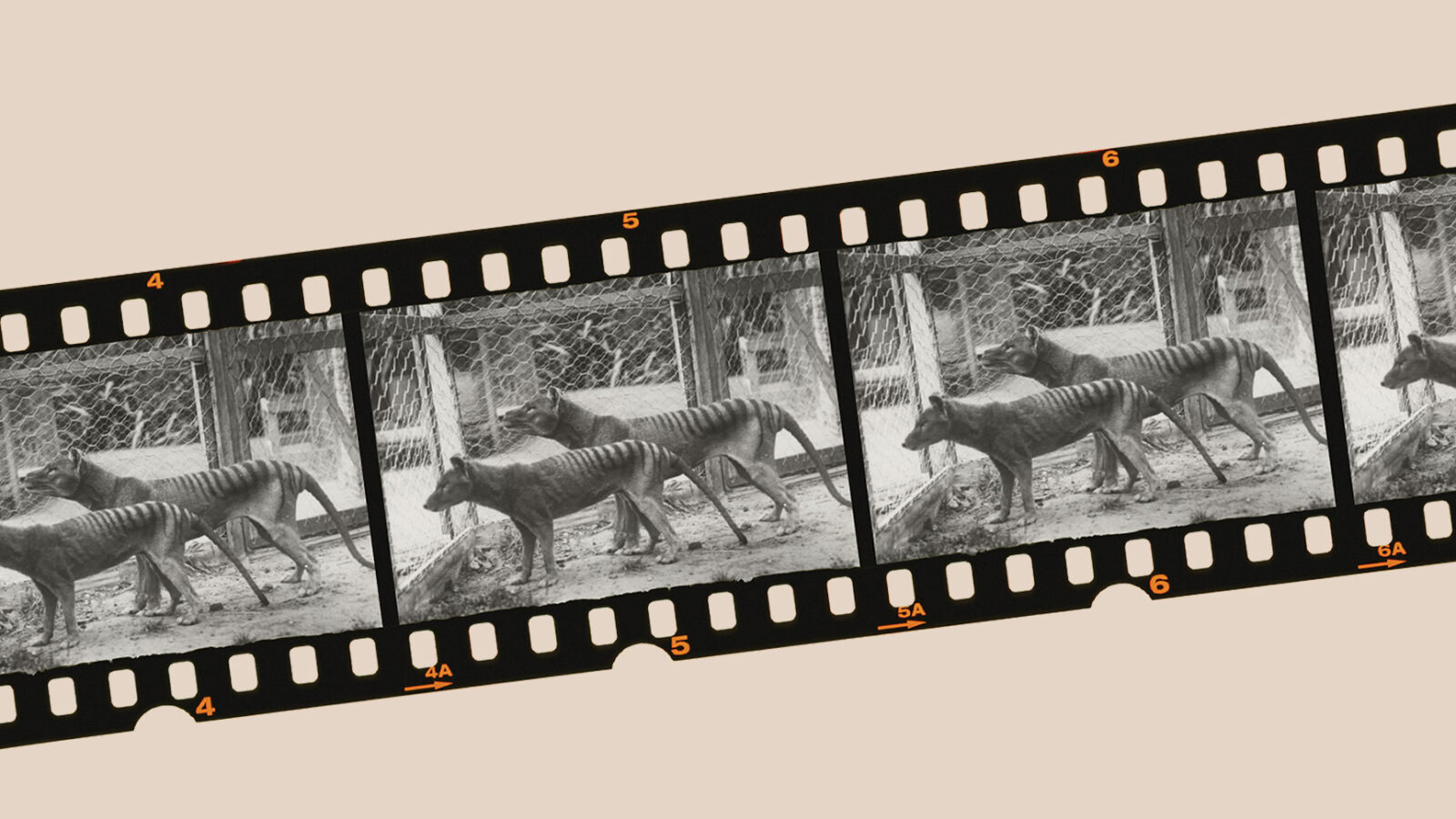On my recent honeymoon in Tasmania, I decided I’d bite my tongue and avoid discussing a certain controversial topic with any of the locals. It only took a measly week before I caved in.
“Do you think the thylacine [Tasmanian tiger] is actually extinct?” I quizzed the receptionist for a boat cruise on the west coast.
It’s a question that my wife and I found ourselves discussing with increasing intensity over the following days, including vox popping locals for their take. The response varied from outright scepticism, right through to “I have a mate that saw it!” A quick online search turns up unconvincing footage or blurry photos of the striped marsupial which was last seen alive in a Hobart zoo in 1936. The animal was declared extinct by the International Union for Conservation of Nature in 1982, almost 50 years after the last thylacine in captivity died.
Tasmanian locals who believe in the thylacine’s continued existence will tell you the animal has an acute sense of smell, and thus has been able to avoid detection over the succeeding decades. In fact, there’s a large group of likeminded people who form the “thylacine Awareness Group of Australia”. Though they work passionately to find critical pieces of evidence, many also believe in the conservation of the species by not inviting too much foreign interest which may hinder their repopulation.
The thylacine isn’t alone—the New Zealand huia has also allegedly been sighted in hiding after being declared extinct; a predicament shared by the Kashmir musk deer from Afghanistan and New Guinea singing dog amongst many others.
I found this idea intriguing, with comparisons begging for analysis. A minority in the stage of “regrouping” and eventually “regrowing” or “repopulating” is one akin to the situation our Church finds itself in now. No doubt if you’ve entered your local church in between lockdowns, you’ve noticed a few more empty pews—and not just because of COVID-19 precautions.
God’s people in the Bible have often been described as the remnant; the ones who are steadfast in God’s Word but do not comprise the majority in their number. They hold the truth in its original form but are also oppressed as a result. A quick look at Revelation tells you what the remnant can expect in the future—”the dragon was enraged at the woman and went off to wage war against the rest of her offspring—those who keep God’s commands and hold fast their testimony about Jesus” (Revelation 12:17).
While on a surface level it may seem that the remnant is about survival—a “smaller” group strongly bonded by their faith that just needs to make it out the other side—this neglects a key component of the remnant. Unlike the thylacine, the remnant doesn’t hold the characteristics of an endangered or extinct animal that is regrouping in secret. The prophetic message shared by God’s people is instead intended to be “a light in a dark place, until the day dawns and the morning star rises in your hearts” (2 Peter 1:19). And those who are faithful are again described as the “light of the world. A town built on a hill cannot be hidden” (Matthew 5:14).
Regardless of if one can visit a church due to restrictions or not, I pray that we continue to be an example of God’s truth to the world. I hope that we’ll embody God’s view of the remnant—“the righteous are as bold as a lion” (Proverbs 28:1)—with the tools we have at our disposal. And even as my time with Adventist Media comes to a close, I look forward to continuing to connect with you all—whether it be in-person or virtually—and sharing about the awesome news of Jesus’ soon coming. God bless us all until that time.
Daniel Kuberek is a former Signs of the Times assistant editor now working as a video producer in Sydney, NSW.






